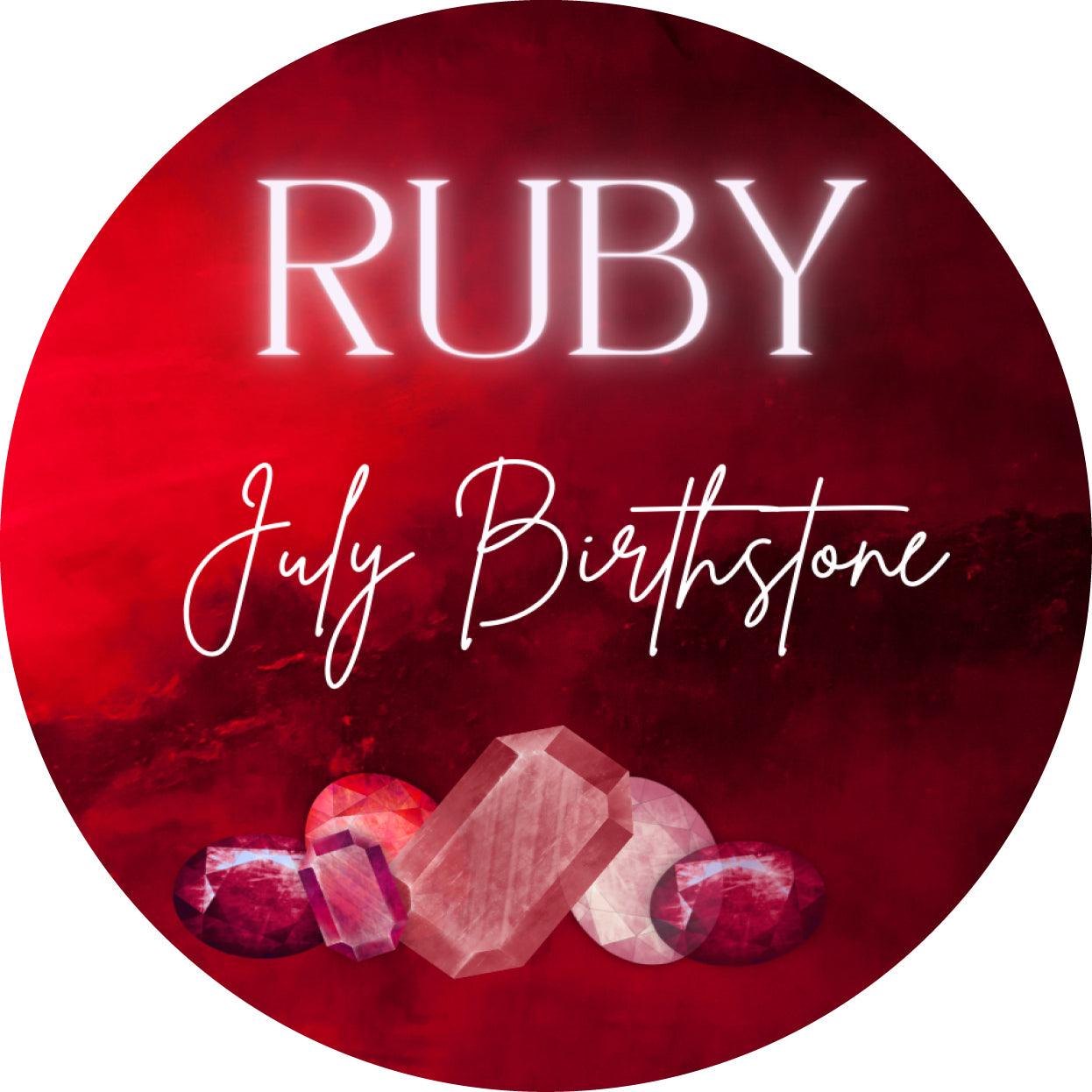
July is here with its beautiful birthstone - ruby. Rubies are one of the most sought-after gems and are usually gifted for the 15th and 40th anniversary. It is the perfect anniversary gift as it allows the fire of passion and love to advance!
The name is derived from the Latin word ruber, meaning ‘red’ – the color of love and passion.
If you want to know more about this beautiful gemstone continue reading!
WHAT’S A RUBY?
Rubies are a variety of corundum that has no coloration. The vivid red colour comes from trace amounts of the element chromium (Cr) - which ranges from an orangy red to a purplish red. The finest colour is called pigeon’s blood in the trade - a deep red colour with a hint of purple.

However, it wasn’t recognised as a variety of corundum until 1800. Prior to that, red spinel, tourmaline, and garnet were also believed to be ruby. Even the Black Ruby, one of the famous crown jewels of England, was considered one of the largest cut rubies until determined to be a spinel.
RUBY SYMBOLISM & LEGENDS
Symbolic of passion, protection, and prosperity, ruby gemstones have been revered since ancient times. In India, the ruby is still considered the “king of precious stones” (ratnaraj) for its rarity, hardness, beauty, and mystical powers. In past centuries, people believed it could predict misfortune and danger, cure inflammatory diseases, and soothe anger. Photo by Akhilesh Sharma on Unsplash
Photo by Akhilesh Sharma on Unsplash WHERE ARE RUBIES FOUND?
HOW TO CLEAN LOOSE RUBIES?
All you need is a bowl, warm water, gentle detergent, and a toothbrush with soft bristles. To remove dirt and oils, dilute the soap in warm water and soak your loose rubies in it for a few minutes or even overnight. You can also use the toothbrush to clean your stones and wipe them dry with a lint-free cloth.WHAT TO LOOK FOR WHEN BUYING A RUBY?

Photo by Samar Ahmad on Unsplash
If you have ever had any doubts about how to choose your rubies, this is what you should be looking for:
Colour
The finest ruby has a pure, vibrant red to slightly purplish red color. The ruby moves down in quality when the color becomes too orangy or more purplish. High-quality rubies have vivid colour saturation.
Inclusions
Inclusion-free rubies are rare and their value depends on how visible the inclusions are. Visible inclusions that reduce transparency or brightness lower a ruby’s value dramatically.
Cut
The cut and proportion of rubies on the market depend on different factors and their crystal shape dictates their suitability for certain cuts. The flat tabular hexagonal shape is the most common one.
Carat Weight
The price per carat goes up significantly for ruby as it increases in size, even if fine-quality rubies over one carat are very rare.
If you want to be extra sure before purchasing this gemstone, you can always rely on Minar Jewellers. Judging the quality of rubies requires expertise, and we have a proud history of jewellers within our family.
At Minar, we take great pride in being professional and 100% transparent. Both our director and manager are qualified diamond graduates, and the director is also a qualified gemmologist.
Our staff also receive training through the ‘Jewellery Education Training’ courses run by the NAJ. Having the right knowledge and expertise enables us to have a good understanding of what we sell, which means that we are able to explain to customers precisely what they are buying. This makes our customers feel more confident about choosing Minar.
REFERENCES
July Birthstones
Ruby Care and Cleaning Guide
https://www.gia.edu/ruby-care-cleaning
Minar Jewellers
Caring for Rubies

